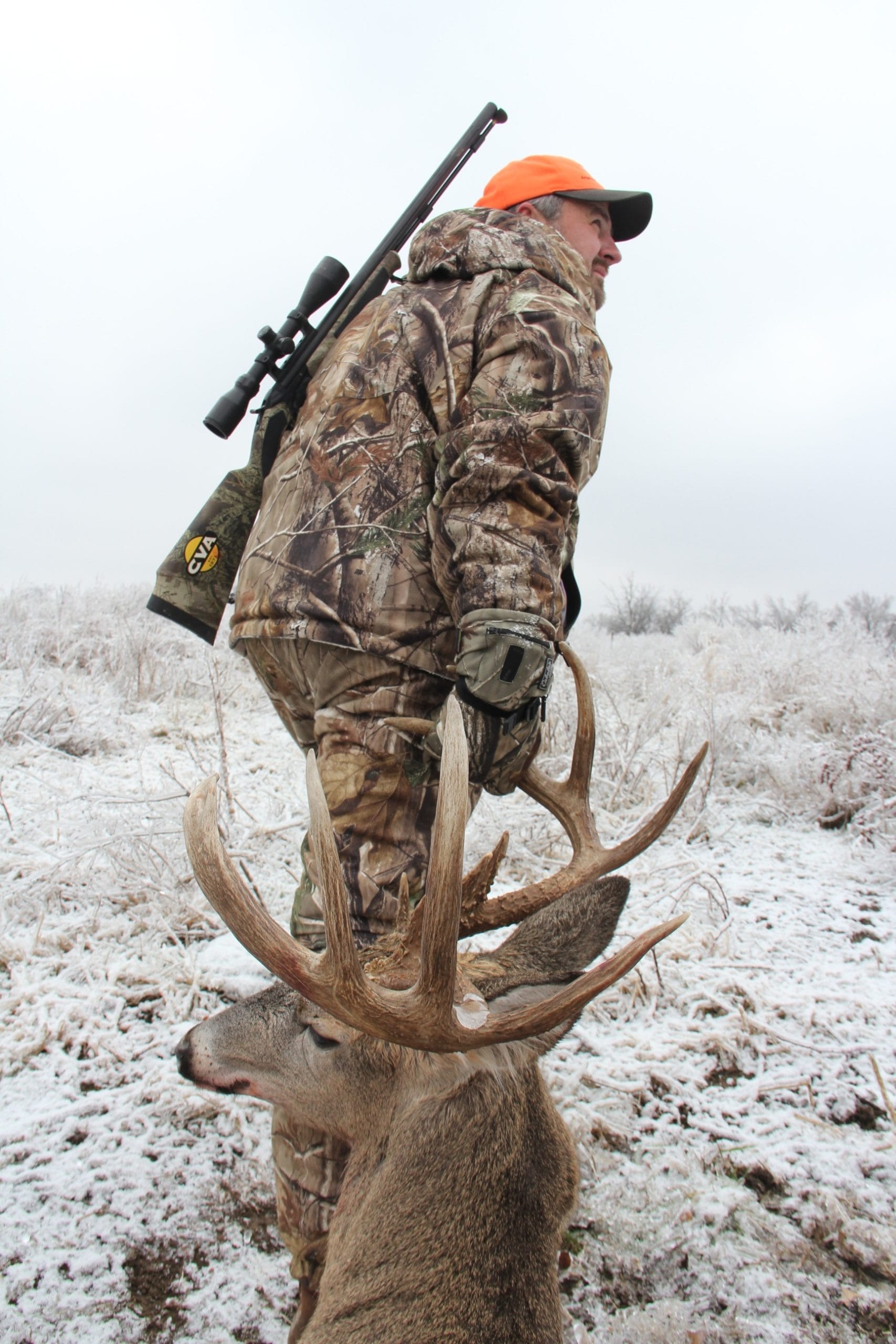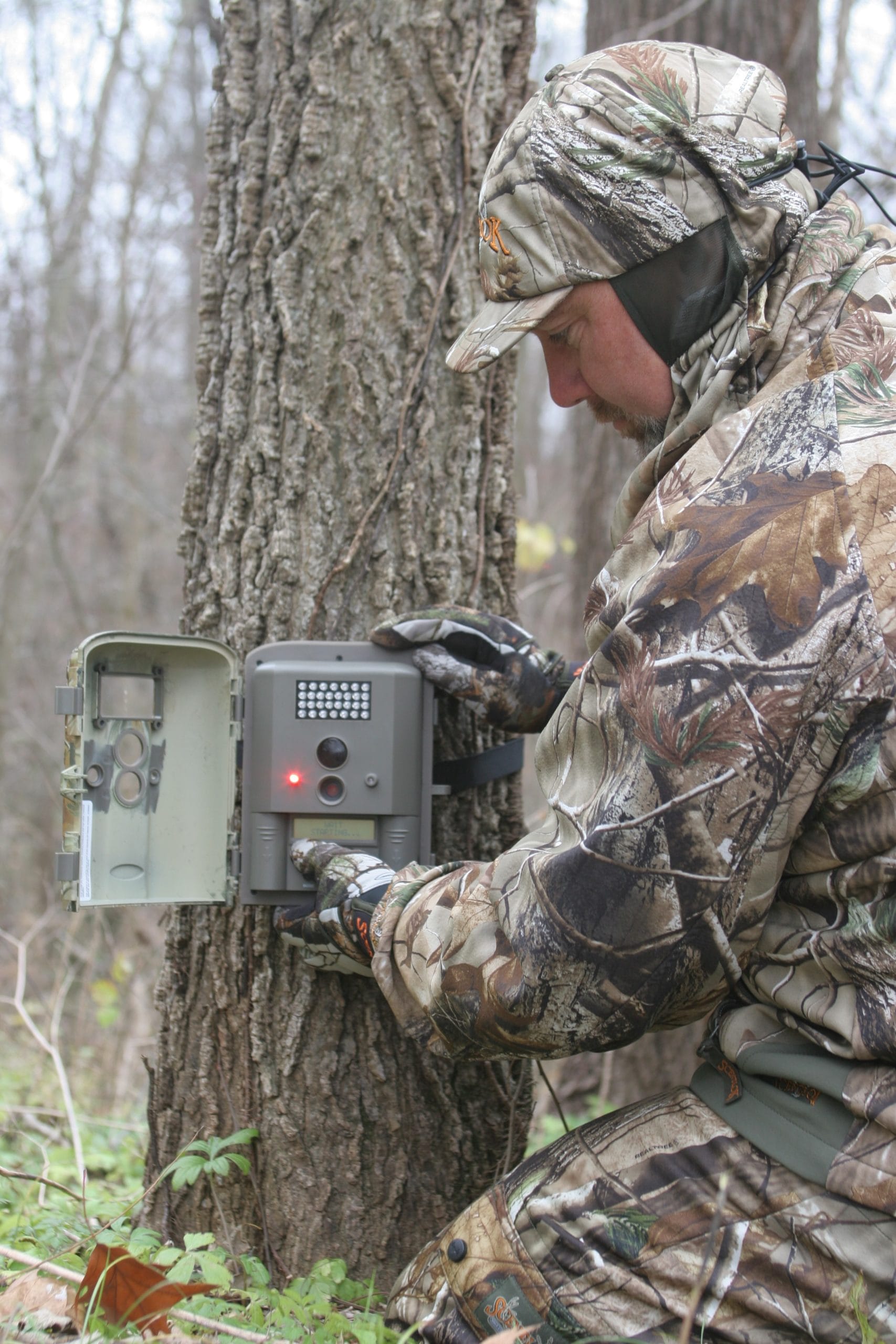by David Hart
Deer season may be over for most of us, but for guys like Dennis Williams, the season never really ends. While others are watching a basketball game or hunting show re-runs, Williams, a 63-year-old retired police officer from Virginia, is walking old ground and new ground, looking for clues that can help him kill more and bigger deer next season. Williams is a year-round deer hunter.

Now is the perfect time for intensive scouting of a big buck’s bedding areas and trails, areas where you would want to tread lightly during hunting season.
“I can learn so much about deer right now that I couldn’t learn before or during the season,” he says. “I try to limit how much time I spend in the woods before and during the season because I don’t want to throw the bucks off their normal routines. The more I’m stomping around during or right before the season, the more I’m messing things up.”
Get A Clue
In other words, there’s no better time to scour your favorite woods or new ground than right now. Not only will you see evidence of what survived the season in the form of tracks, you can find buck sign like rubs and even scrapes. Add a little snow to the mix and well-used trails stand out like an interstate and preferred feeding areas become as obvious as a full moon on a cloudless night. Trails and feeding areas point you to the perfect stand location next year; scrapes and rubs offer clues on where to focus during next season’s pre-rut and rut periods.
“Even if I or someone else kills a good buck from one area, there’s a good chance another big buck will take its place. That’s not unusual because dominant bucks tend to take over the best habitat and feeding areas. When one is removed another moves in,” notes Williams.
He will also slip through thick cover that might serve as bedding areas, something he would never do prior to or during Virginia’s long bow, muzzleloader and rifle seasons. He’s not worried about bumping bedded deer, not now. Instead, simply finding a bedding area can lead him to trails to and from feeding areas, trails that are worth another close look.
That thick cover is also a great place to find sheds. As bucks walk through dense saplings and vines, there’s a good chance an antler or two might get knocked off during their travels.
Shed Hunting
Those sheds are another part of the post-season puzzle. Searching for shed antlers has become a popular pastime for those who enjoy finding a natural prize that once adorned a buck’s skull. For guys like Williams, though, a shed antler is far more than a bonus on a late-winter walk. It’s a clue. Each shed tells a story that helps him focus on a strategy for the upcoming season.
“First, it tells me what survived the season. If it was a pretty good antler this year, it’s probably going to be a real good antler next season, so I’m going to zero in on that deer,” he says. “More important, it helps me pin-point a buck’s location late in the season. If he was hanging out in this area in February or March, there’s a good chance he was hanging out in late December or early January. And since deer tend to have a fairly constant home range, I’m pretty confident that buck won’t be too far away in the early season, either.”
Aside from trails through thicker cover and within known bedding areas, Williams will search food sources, as well. Post-season whitetails spend lots of time in food plots and agriculture fields and bucks often drop their antlers as they feed.
Say Cheese!
That’s why feeding areas are perfect places to hang trail cameras. Even if the bucks have already dropped their antlers, it’s not out of the question to identify bucks by their overall body side or shape. Snap enough photos on cameras placed on known trails and you can begin to piece together a late-season puzzle that can help you close the distance on specific bucks next year.

Trail cameras are a great tool year-round, and now you can run cameras tight in a buck’s territory without worry of bumping the buck.
Williams places up to a half-dozen trail cameras on the 200-acre farm he hunts, concentrating on trails leading to and from bedding areas. He admits that it’s tough to pattern deer in the weeks just after the season closes, but as time goes by, whitetails tend to settle into a more relaxed routine.
“There are a lot of variables this time of year and what’s going on now may not be happening when bow season opens next October,” admits Williams. “At least I’m learning things that I would never have known if I didn’t get out after the season closes. I’m also getting exercise and I’m enjoying the outdoors. I’m a hunter. It’s just what I love to do.”
The Union Sportsmen’s Alliance website is designed to provide valuable articles about hunting, fishing and conservation for members of AFL-CIO affiliated labor unions and all sportsmen and sportswomen who appreciate hunting and fishing and want to preserve our outdoor heritage for future generations. If you would like your own story and experience from the outdoors to be considered for our website, please email us at [email protected].



